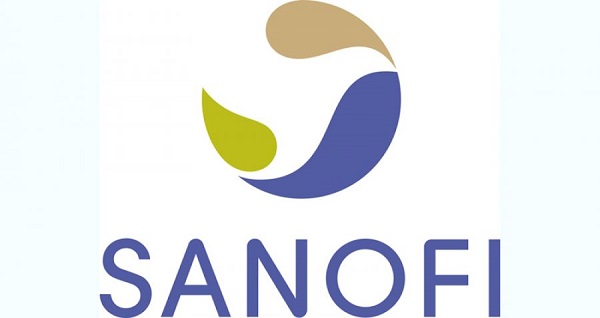Executive Interview: Dany De Grave, Sanofi

Implementing AI projects company-wide;
Challenges include making data sets complete and useful,
Managing expectations, communicating results
Dany De Grave is Senior Director Science & Innovation, FluNXT, formerly Innovation Programs & External Networks, for the Pasteur Division of Sanofi, a French multinational biopharmaceutical company. He was also project leader for the Cognitive Computing for Regulatory Intelligence AI effort for the Information Technologies & Services department at Sanofi. He has held past positions at GlaxoSmithKline Biologicals, and SmithKline Beecham Biologicals. He recently spent a few minutes talking with AI Trends Editor John P. Desmond.

Q. What is your role at Sanofi and how would you describe the company?
A. As Senior Director of Innovation Programs and External Networks, my goal was to bring innovation into the company of a type that was so advanced that it allowed us to fundamentally change the way we work, to do things we couldn’t do before. Also, it needed to be implemented economically and advance our current and upcoming projects. So, it needed to be ‘cutting edge’ innovation but not something that would be great only 20 years from now.
Sanofi is a diversified global healthcare company, present in more than 170 countries and providing a range of healthcare solutions to people, as our focus is exclusively people. We have a division focusing on diabetes and cardiovascular disease, a consumer healthcare division, a division focusing on specialty care, and also established medicines and emerging markets. The fifth focus area is called Sanofi Pasteur and is all about vaccines. It goes back to the days of Louis Pasteur, the French biologist who invented the principles of vaccination, and that’s the area where I have been spending most of my activity for Sanofi. The global Sanofi organization has over 100,000 employees. It’s quite an extensive operation.
Q. How does AI play into your role there?
A. When we started with AI a couple of years ago, AI fitted the definition of ‘cutting-edge’ innovation. One of our first goals was to demonstrate that AI could be used in our field, that it really could change the way we work for the better. Since then, a lot of my work has been about leading the implementation of several AI projects across different Sanofi divisions in North America.
The types of projects are diverse, ranging from Research to late-stage development, and regulatory. Availability of data sources can come from either our own internal projects or through external sources. We work with people internally and with external partners. It has been quite a varied journey so far.
Q. What areas of AI innovation is Sanofi exploring these days?
A. Some groups might be actively exploring AI and some groups have already fully integrated AI into the way they work. In R&D, we have projects in biomarkers and genomics. We are exploring AI in applications for clinical development, marketing, regulatory, and manufacturing. There is not one big focus area; it is really about looking at how we operate and how can AI contribute or not.
Q. Can you say what AI technologies or approaches are being tried? What would you describe as the AI technology or approach primarily that’s being used?
A. It entirely depends on the business case. If we are researching text as a data source, we need to use natural language processing (NLP). Some projects will combine both text and numbers as data sources. We try to find the best people to work with the algorithms suited for each project. There is not one standard approach.
Q. How far along is Sanofi in the adoption of AI, in your opinion?
A. AI is clearly part of a path forward. We are past the stage of wondering if AI will be useful, which was the case several years ago. The adoption of AI is now spreading across the different departments, divisions, and disciplines. It is at a stage where we are starting to explore in some areas while other departments have finished, completed projects. We have been doing work with external partners, while at the same time, we have hired data scientists and technical AI experts to do work in-house. A balanced approach is necessary to grow AI within the company by doing projects with both internal and external resources.
Q. Can you mention one or more outside partners you collaborate with in your pursuit of AI?
A. We have worked with Berg Health, Exscientia, and others. It has been a rich good series of interactions with a diverse group of external partners.
Q. Can you talk about any internal projects that may have been completed or implemented?
A. Sanofi is using AI to learn about how people respond to vaccines, so we’re looking for biomarkers. We want to better understand what’s happening at the time of vaccination and over time. What are the determinants of immune response to vaccination, and how could they be leveraged?
Another example is using AI in the regulatory domain. Sanofi is exploring the use of AI to understand the available regulatory information and to add a chatbot-type interaction with the information. That would enable us to ask a very specific regulatory-oriented question in a natural communication interface and receive an answer from the system. Instead of having people search through documents with different tools, we can have just one tool that gives us the answer and enables us to learn more.
Q. What would you say are the challenges in the adoption of AI at Sanofi? For example, how do you manage expectation?
A. AI is an emerging technology and that comes with its typical challenges. One challenge is access to data. Do we have the right data sets? Are the data sets complete or fragmented? Can we utilize them? Can we easily access them? Sometimes we have a lot of data, but we might not be able to use it because it may be that we don’t have the appropriate clinical trial authorization due to consent. It complicates a little bit how things go. It is not just push the button and we’re up and running. A lot needs to be verified.
Then there is also what I would call the human aspect. AI is a new technology. It is something that’s going to create change. It is changing the way we operate and the way we think. As usual, there will be some early adopters and there will be those who first want to see lots of proof that AI can make a difference for their world; that AI can be a big help in their role.
As for managing expectations, it is easy to be impressed by those latest AI announcements from Google and others, showing all the wonderful things that AI can do and is doing; it is really impressive. What is very often not mentioned is that a lot of time, money, and effort have gone into these systems before they can generate those wonderful results.
A lot of work is needed to get these systems to do analyses in two weeks or in six weeks, or longer. Managing expectations is a bit of telling people it’s not going to happen in the next couple of weeks. It is important to educate people on what we learn as we do AI projects, and what other people are learning around AI projects.
In our industry, with regulatory limitations on which data you can use for which type of analyses, it is a part of AI activities that requires effort and validation. It is a constraint some industries may not have. Also not much talked about is that with AI projects very often results only come at the end. That is after the system has been created and people have trained it. That takes time. Many people are not used to having to wait.
We have been living in a world that’s more linear. We try experiments, we get results, we integrate them, we think about it. People see a continuous string of results. With AI, it can take some time before the system is up and running, trained, and then the results come along. Sometimes people start to get worried that the project is not going to end well because they don’t see results. So that expectation needs to be managed.
Q. How does AI affect job titles and reporting paths in the organization?
A. I would call it a work in progress. It is emerging technology, so things change and companies will adapt. New job titles are being created, and new organizational structures are coming into effect, with AI as a key in those activities. This is all not happening overnight. This is a gradual, natural evolution for the organization.
Q. Are you able to find the people you need to carry out the work involving AI at Sanofi?
A. Yes, we are in an environment where we can attract people who want to use their AI talent to advance medicine to help develop life-saving products, and to overall contribute to making people’s lives better. This has helped us to attract the right people to do AI work internally or to collaborate with externally. Also, many of our company sites are located very close to AI talent, so that certainly also helps.
Q. Do you have any advice for young people interested in a career in AI, for what education and experience they should pursue?
A. Besides the technical side of things, which is very important, advice I would give to young people entering this domain is to make sure they develop good communication skills. It is something not really talked about, but we have people on AI projects from different disciplines: AI experts, scientists, and business people. They all speak kind of a different language, even if they all speak English.
So whatever domain you choose to go into, machine learning or natural language processing, for example, it’s important to be able to translate your results into a message understandable by the other people involved. I have seen it happen, and the risk is real, that the AI project otherwise will be perceived as failed or not living up to its high expectations, when it actually has very useful results. Only due to a communication style not well adapted to the audience.
That is a shame when you have done something great, but the translation is not there, so it’s not understood by other people. That is to no one’s advantage. It certainly doesn’t help the scientist when they do not fully understand what is coming out of the analysis. And the businessperson will not be able to take it further to make good use out of it. Our work is to provide healthcare solutions to people and to help our patients. AI is a tool. If it cannot be translated across the organization, it’s not very useful.
Q. Is there anything you would like to add?
A. AI is here and it’s not going to go away, but we still need a lot of effort to really make the best use of it. Organizations will have to further evolve, people will have to start using it in their thinking, and in the way they work. The output of AI puts us a little bit on a different path. So, there’s more work to do and more skills to be developed.
Learn more at Sanofi.
